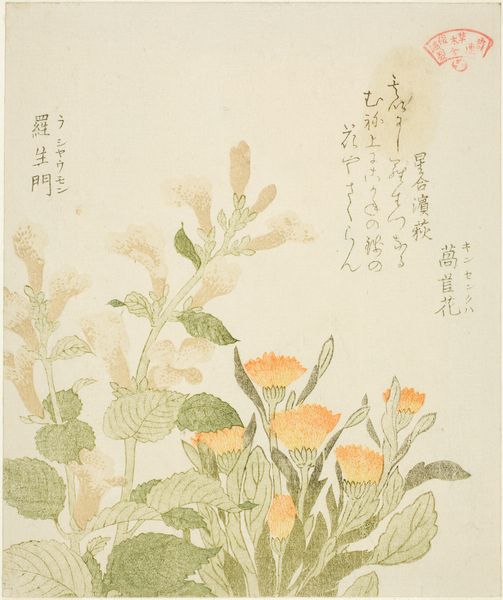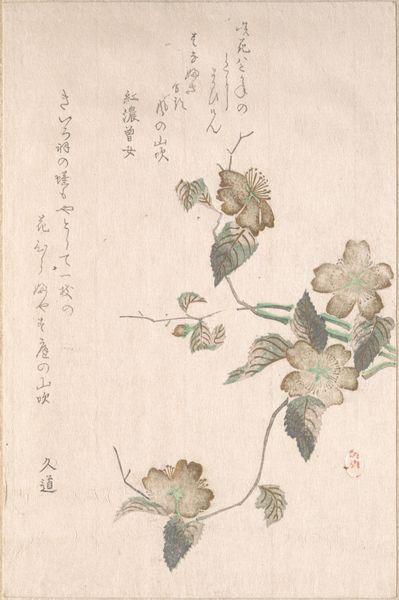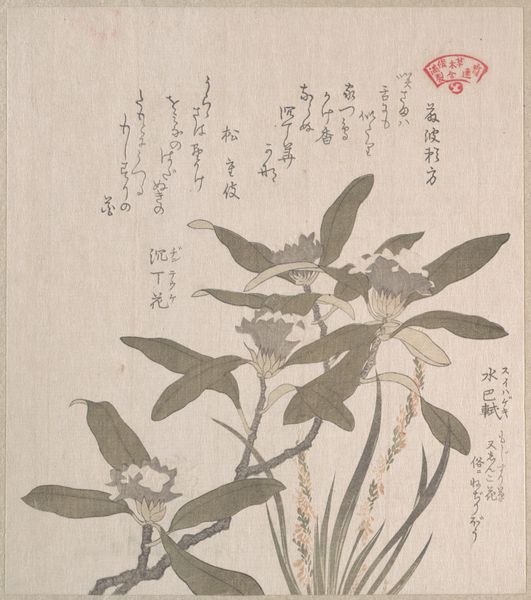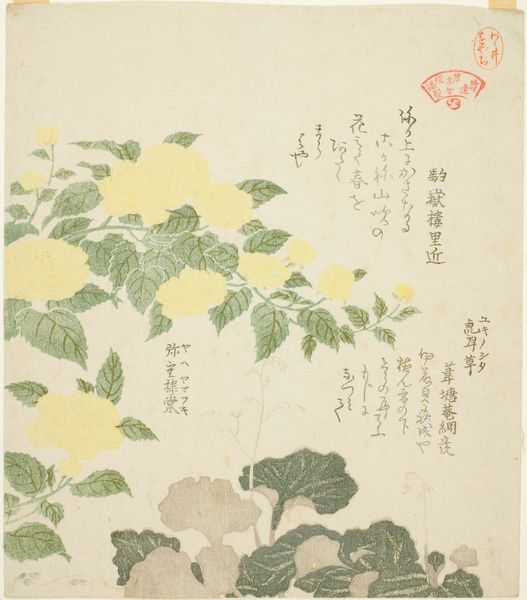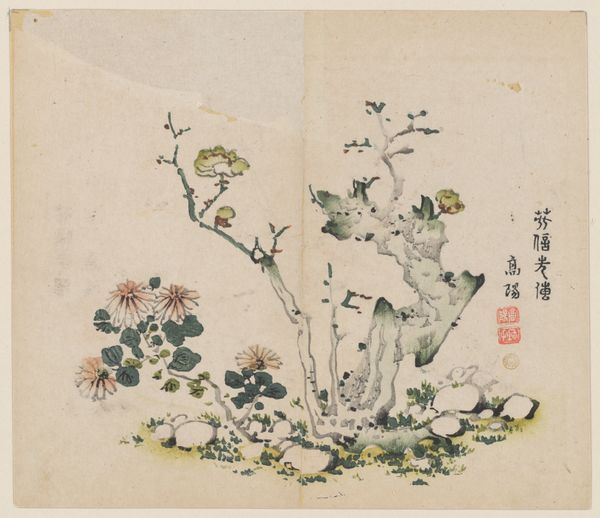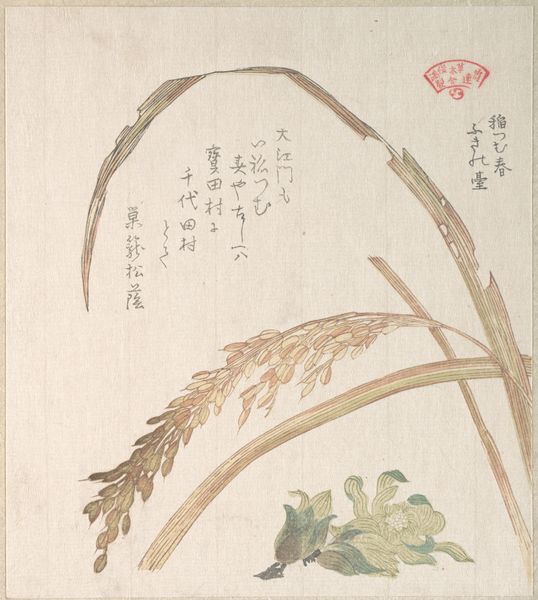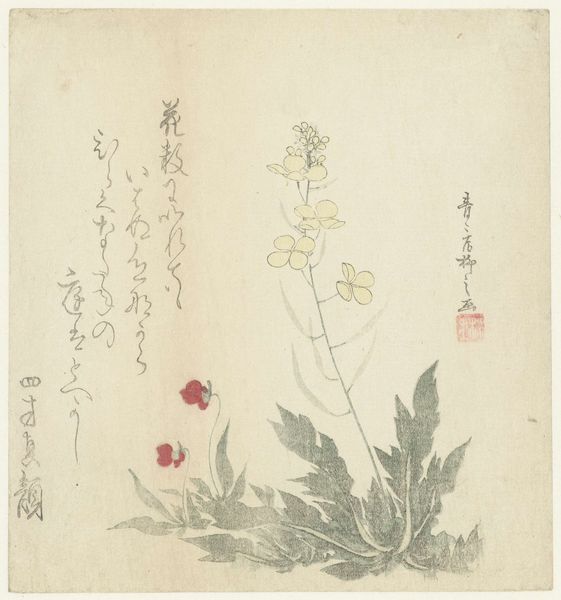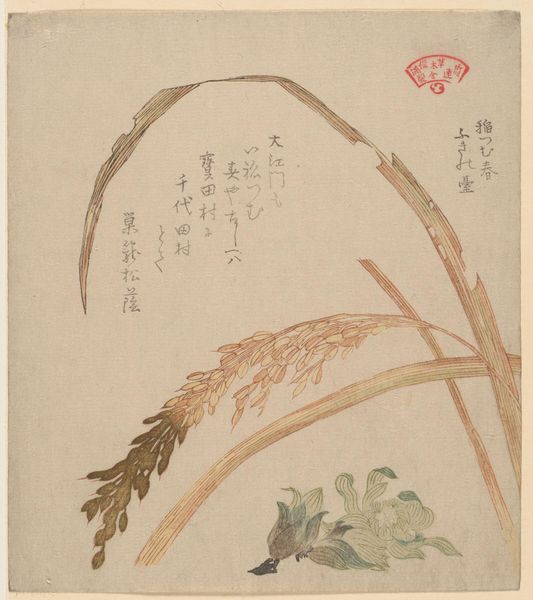
The Common Marigold and The Rajoman Flowers 19th century
0:00
0:00
print, paper, ink, woodblock-print, woodcut
#
aged paper
#
toned paper
# print
#
asian-art
#
flower
#
ukiyo-e
#
paper
#
ink
#
woodblock-print
#
woodcut
Dimensions: 8 1/4 x 7 1/4 in. (21 x 18.4 cm)
Copyright: Public Domain
Editor: This is "The Common Marigold and The Rajoman Flowers" by Kubo Shunman, a 19th-century woodblock print with ink on paper, held at the Met. I’m struck by the contrast in colors, the delicate rendering of the flora, and the inclusion of text. What do you see in this piece from your perspective? Curator: I find it interesting to consider this print within the context of the ukiyo-e tradition. These "pictures of the floating world" were often aimed at a burgeoning urban population. How might images of carefully arranged flora like this have spoken to that demographic's values or aspirations? Editor: So, beyond just being pretty pictures, these prints were communicating something about society at the time? Curator: Precisely. Ukiyo-e, and particularly works depicting the natural world, weren't just aesthetic objects. They engaged with contemporary trends and philosophies, reflecting—or even shaping—the tastes of the audience and influencing notions of leisure, taste, and the good life. It also prompts me to wonder: to what extent did prints like this play a role in shaping ideas about the natural world in urban centers? Editor: That's a point I hadn't considered. They almost served as a way for urban populations to remain connected with nature...or a curated version of it. I'm going to remember that next time I am viewing ukiyo-e prints. Curator: And perhaps reflect on how museums today still engage in similar processes of curation and representation. Thanks to images and text being preserved and viewed centuries later, people are still creating meaning out of the intentions. It also demonstrates how powerful the medium of the visual arts is in culture, at that moment and today.
Comments
No comments
Be the first to comment and join the conversation on the ultimate creative platform.

